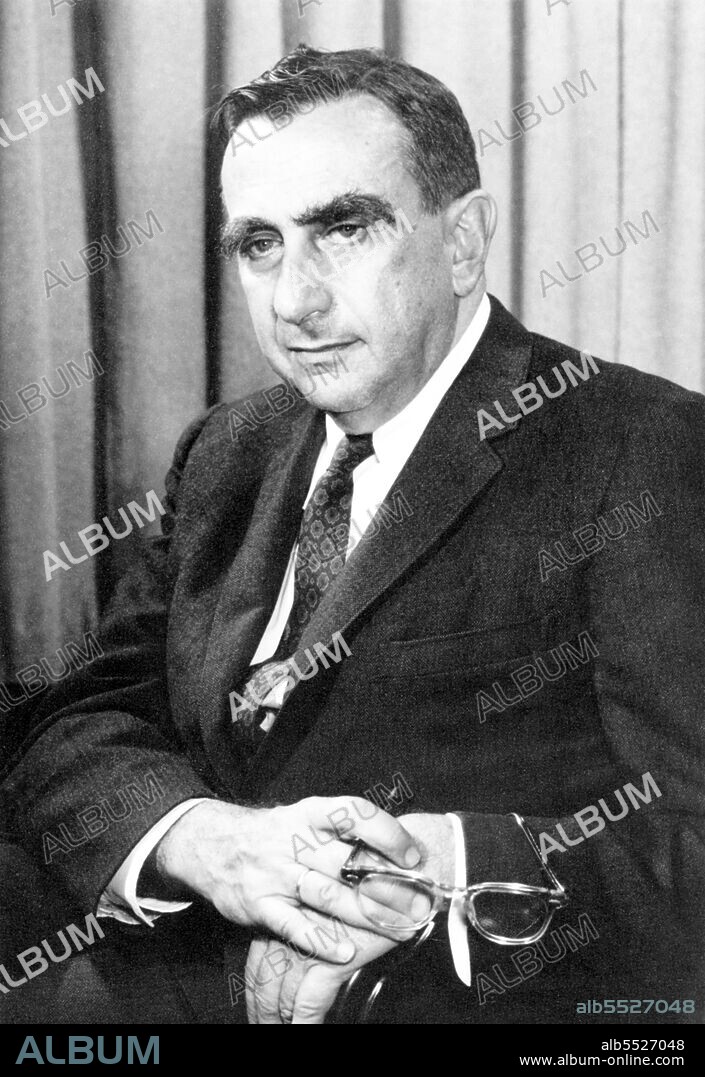alb5527048
USA / Hungary: Edward Teller (January 15,1908 – September 9,2003), Hungarian-born American theoretical physicist known colloquially as 'the father of the hydrogen bomb'. Lawrence Livermore National Laboratory,1958

|
Zu einem anderen Lightbox hinzufügen |
|
Zu einem anderen Lightbox hinzufügen |



Haben Sie bereits ein Konto? Anmelden
Sie haben kein Konto? Registrieren
Dieses Bild kaufen.
Nutzung auswählen:

Titel:
USA / Hungary: Edward Teller (January 15,1908 – September 9,2003), Hungarian-born American theoretical physicist known colloquially as 'the father of the hydrogen bomb'. Lawrence Livermore National Laboratory,1958
Untertitel:
Siehe automatische Übersetzung
Teller immigrated to the United States in the 1930s, and was an early member of the Manhattan Project charged with developing the first atomic bombs. During this time he made a serious push to develop the first fusion-based weapons as well, but these were deferred until after World War II. After his controversial testimony in the security clearance hearing of his former Los Alamos colleague J. Robert Oppenheimer, Teller was ostracized by much of the scientific community. He continued to find support from the U.S. government and military research establishment, particularly for his advocacy for nuclear energy development, a strong nuclear arsenal, and a vigorous nuclear testing program. He was a co-founder of Lawrence Livermore National Laboratory (LLNL), and was both its director and associate director for many years.
Bildnachweis:
Album / Pictures From History/Universal Images Group
Freigaben (Releases):
Model: Nein - Eigentum: Nein
Rechtefragen?
Rechtefragen?
Bildgröße:
3500 x 5081 px | 50.9 MB
Druckgröße:
29.6 x 43.0 cm | 11.7 x 16.9 in (300 dpi)
Schlüsselwörter:
 Pinterest
Pinterest Twitter
Twitter Facebook
Facebook Link kopieren
Link kopieren Email
Email
